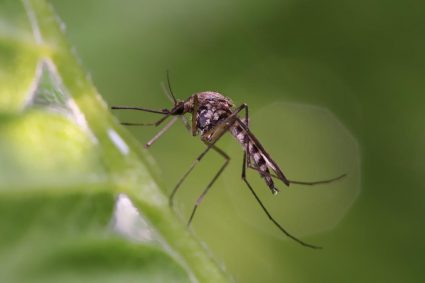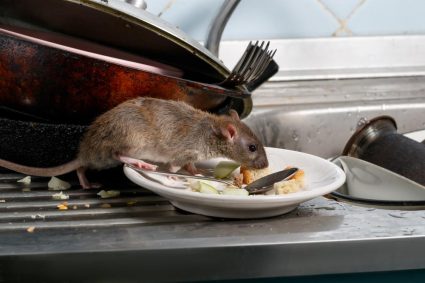
Skunks, known for their distinctive black and white coat and their notorious defense mechanism, are often found in suburban and urban areas. While they play an essential role in controlling pests, they can also become a nuisance to homeowners due to their odor and their tendency to burrow under structures. If you find yourself in a situation where a skunk has taken up residence in your yard, it’s essential to know how to humanely trap and relocate the creature.
To humanely trap a skunk, you need to choose a medium-sized live trap with solid sides. Set the trap at dusk or in the evening in areas where you’ve noticed skunk activity, preferably near a water source. Use strong-smelling foods like fish or bacon as bait, and check the trap at least once a day. If you’ve caught a skunk, approach it calmly, cover the trap with a blanket, and gently transport it to a release site at least 10 miles away from your property. Always check local laws regarding trapping and relocating skunks.
Choosing the Right Trap
The first step in humanely trapping a skunk is selecting the appropriate trap. A medium-sized live trap is ideal, typically 17 inches long with a 7×7 inch opening. Traps with solid sides are preferable as they can help reduce the risk of being sprayed. There are several humane skunk traps available on the market, such as The Snare Shop Spray Proof Skunk Trap, J T Eaton Spring Loaded Catch and Release Humane Skunk Trap, and No. 6 Skunk-N-More Live Trap, among others.
Strategic Placement of the Trap
Once you have the right trap, the next step is deciding where to place it. Skunks are nocturnal, so it’s best to set your trap at dusk or in the evening. Consider areas where you have noticed skunk activity, such as near den entrances, along trails, or under buildings. Skunks generally live within two miles of water, so setting a trap near a water source can increase your chances of success.
Baiting the Trap
Skunks are omnivores with a preference for strong-smelling foods, making bait selection crucial. Some of the best bait options include fish (canned or fresh), fish-flavored cat food, chicken parts, bacon, and peanut butter on bread. Other options include honey, molasses, fish eggs, or slightly spoiled meat. Position the bait in a way that lures the skunk all the way inside the trap and encourages it to step on the trigger plate.
Ensuring Skunk Safety
After setting up the trap, check it at least once a day to avoid leaving the skunk trapped for an extended period. Once you’ve captured a skunk, approach the trap slowly and steadily, covering your body with a blanket from your shoulders to your feet. Speak softly or hum to make the skunk aware of your presence without startling it.
Gently drape a sheet or blanket over the trap to keep the skunk calm and reduce the chances of it spraying. When moving the trap, handle it gently and move slowly to minimize stress on the skunk.
Releasing the Skunk
Transport the trapped skunk to a suitable location for release, following local regulations and guidelines. Choose a spot at least 10 miles away from your property to prevent the skunk from returning. At the release site, slowly and carefully remove the cover from the trap. Open the trap door and step back, allowing the skunk to exit on its own. Be patient, as the skunk may take some time to leave the trap.
Preventive Measures
Trapping and relocating skunks should be the last resort. Homeowners should first take preventive measures to discourage skunks from entering their properties. These include securing trash, installing fencing, using repellents, maintaining the yard, sealing off potential shelters, and using a motion detection sprinkler.
Remember, it’s essential to check your local laws and regulations regarding trapping and relocating skunks, as some areas may have specific requirements or restrictions. Always aim for a humane solution, prioritizing the well-being of the animal and the safety of all involved.
Frequently Asked Questions
What should I do if I get sprayed by a skunk?
If you get sprayed by a skunk, immediately rinse your eyes with cold water if they were affected. Then, take a shower using a mixture of 1 quart of 3% hydrogen peroxide, 1/4 cup of baking soda, and 1 teaspoon of liquid soap. Wear rubber gloves and apply this mixture to your body, avoiding the eyes, nose, and mouth. Rinse thoroughly with warm water.
What time of the year are skunks most active?
Skunks are most active during the warmer months. In some regions, they hibernate during the winter, but in milder climates, they remain active year-round. During the breeding season, typically from February to April, skunks may be more visible as males travel in search of mates.
Can skunks carry diseases?
Yes, skunks can carry diseases such as rabies, leptospirosis, and tularemia. They can also host a variety of parasites, including fleas, ticks, and mites. Always handle trapped skunks with caution to reduce the risk of disease transmission.
How can I tell if a skunk is preparing to spray?
Skunks usually give warning signs before they spray. These include hissing, stamping their front feet, and raising their tail. If a skunk turns its back towards you and lifts its tail, it’s likely preparing to spray.
What should I do if the skunk doesn’t leave the trap after I open it?
If a skunk doesn’t leave the trap immediately, give it time. It may be frightened or disoriented. Do not attempt to physically remove the skunk from the trap. Instead, move a safe distance away and wait. In most cases, the skunk will eventually leave the trap on its own.











